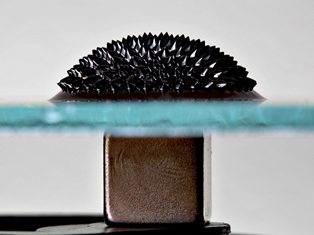Specific Challenge:
The realisation of the European goals of increased energy efficiency, reduction in CO2 emissions and the circular economy require novel ways of using, harvesting and storage energy. Smart materials and material systems/structures have already demonstrated the potential to reduce energy consumption as well as harvest, generate and store energy. However, implementation has been limited due to the materials’ operational reliability as well as issues of recyclability and dependence on rare elements. In addition, cost concerns or lack of efficient manufacturing processes prohibit the wider implementation of such technologies. The next step is the implementation of these technologies in a wide range of commercial applications allowing the exploitation of the characteristics of smart materials. As the application of smart materials and developments in sensor technologies are dominated by SMEs in the EU, extending their innovation potential for smart materials applications is important for maintaining their market position and has a significant impact in improving EU competitiveness.
Scope:
 Proposals should cover the following:
Proposals should cover the following:
- The development of new materials and material combinations with energy harvesting and storage capabilities (e.g. lead-free piezoelectric based devices for energy generation and energy storing automotive structural components or magnetic materials systems);
- Clearly demonstrate reduction of around 25% in overall materials and processing costs relative to the state of the art and how the implementation of those technologies would be achieved;
- Demonstrate the recyclability and reliability of new smart materials, as well as a reduction in the dependence on rare elements;
- Integrate sensor technologies (e.g. MEMS based sensor concepts) and the potential linkage with the Internet of Things (IoT);
- Assess market perspectives and patents as well as standardisation;
Activities are expected to start at TRL 3 and achieve TRL 5 at the end of the project.
The Commission considers that proposals requesting a contribution from the EU between EUR 5 and 7 million would allow this specific challenge to be addressed appropriately. Nonetheless, this does not preclude submission and selection of proposals requesting other amounts.
Expected Impact:
- New materials facilitating technology systems for sustainable energy supply allowing a reduction of greenhouse gas emissions by at least 40% based on lifecycle analysis;
- Reduction of hazardous waste by 50% through efficient manufacturing practices and/or materials selection;
- Development of new technologies, applications and services providing direct support for the wider implementation of the DSM and IoT, (e.g. enable the development of wireless sensor networks, or, deployment of energy harvesting powered sensor nodes to monitor remote locations);
Relevant indicators and metrics, with baseline values, should be clearly stated in the proposal.
| Types of action: | RIA Research and Innovation action | ||
| DeadlineModel: Planned opening date: |
two-stage 16 October 2018 |
Deadline: 2nd stage Deadline: |
22 January 2019 03 September 2019 |
Source: The European Commission